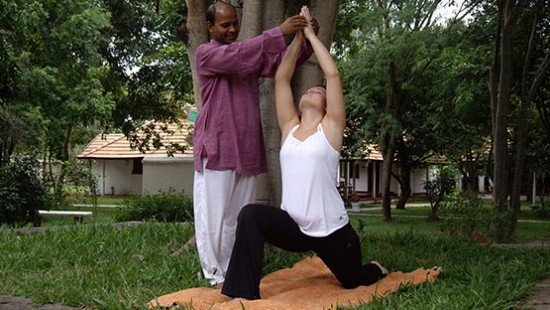

Yoga And Meditation can be brought together by introducing meditation in yoga which quietens the mind and positively affects the health.
Derived from the Sanskrit word for ‘union’, yoga refers to far more than exercise. It encompasses a variety of disciplines designed to ultimately bring its practitioners closer to true nature. Raja yoga seeks reunion through mediation, while Jnana yoga entails the study of scriptures and Karma yoga calls for selfless service to God and mankind.
At AyurvedaGram, the exercise is Hata yoga, a discipline intended to prepare the body for the pursuit of union with the divine while raising the practitioner’s awareness of creation to a higher, keener state. Through Pranayama (controlled breathing), Asana (prescribed postures) and mediation, the Ashtanga yoga master helps one to enhance Prana, or life force, and achieve a state of balance and harmony between body and mind.
Each of these three disciplines contributes to the search for the union in its own way.
Breathing: As the life force Prana is believed to enter the body through the breath, much of Pranayama is concerned with helping you to regulate your breathing properly.
Postures: Some yoga postures are intended to strength and strengthen muscles, other to improve posture and work the skeletal system, while others aim to compress and relax the organs and nerves.
Meditation : Meditation supplements and reinforces the disciplines of thought by focusing the mind and relaxing the body.
The regular practice of yoga exercise which is personalized to suit individual needs at AyurvedaGram improves physical fitness and blood circulation, reduces stress, enhances the sense of well-being and improves the overall effectiveness of the treatment.
